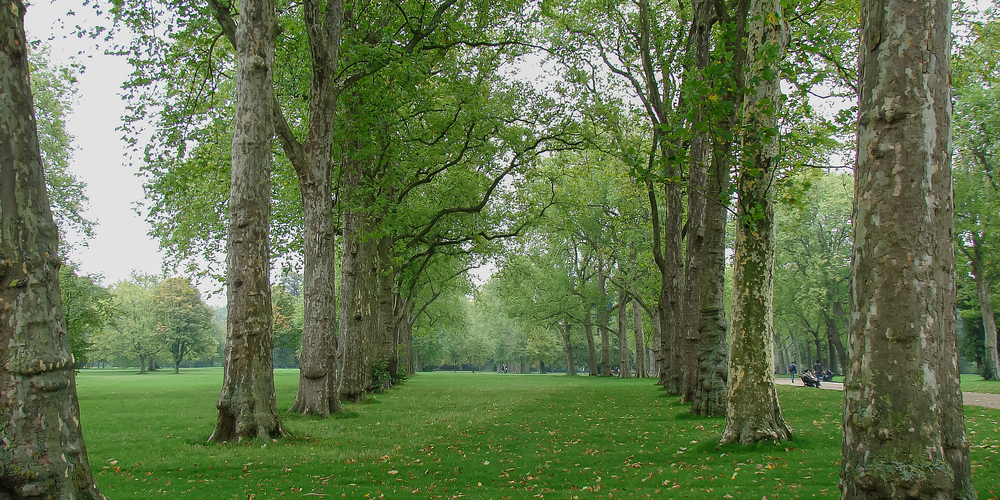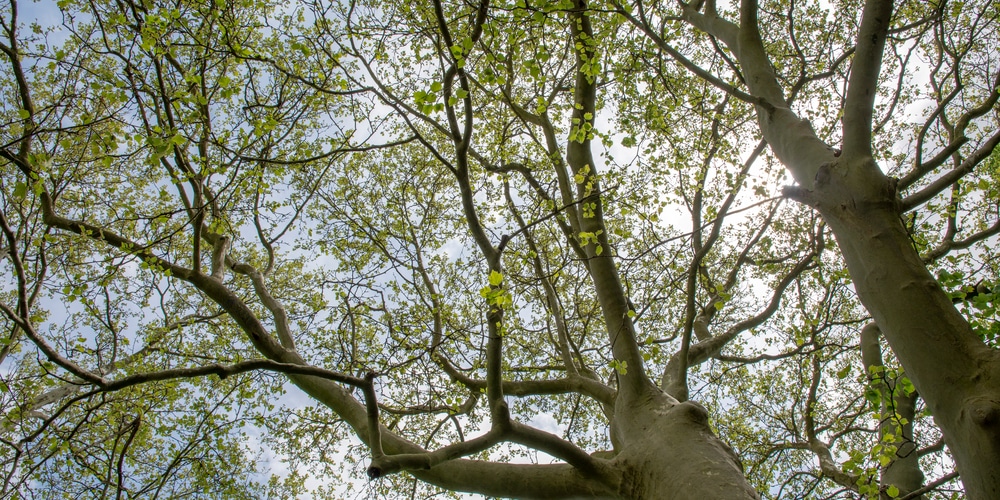The London Plane Tree is a superb urban landscape specimen due to its high tolerance to pollution and pests. When taking care of a London Plane tree, you’ll want to make sure you’re not overwatering so it can grow healthy and full-sized.
Read our guide to London plane tree overwatering and how to fix it.
Signs of an Overwatered London Plane Tree
Although London Planes generally like consistently moist soil, they can get waterlogged and experience stunted growth if you’re too eager with the hose.
Some of the most common signs include the following:
- Green leaves dropping
- New growth quickly decays
- The Soil around the tree doesn’t seem to dry out
Leaf Drop
Your London Plane Tree will start dropping leaves, even healthy and green ones when it has too much water. When you see healthy leaves constantly dropping and on the ground, it’s most likelydue to waterlogged soil.
You can also try to give the tree leaves a gentle tug and see if it breaks off easily to check for overwatering symptoms.
New Growth Withers
Trees constantly put out new growth during their growing season in the form of leaves and branches. If your London Plane tree does this but can’t seem to complete the cycle, e.g., turns light yellow or brown then it’s an overwatering issue.
This sign becomes a concern as the tree will have stunted growth and will be unable to produce foliage to capture more food and light.
Perpetually Wet Soil
London Plane Tree owners who notice the soil around the plant to have a perpetually wet state can expect leaf drop and withering.
The excess water chokes out the roots and won’t allow them to get oxygen and nutrients. In addition, the roots may exhibit rot and can turn from healthy to diseased.
How to Fix an Overwatered London Plane Tree
Abstain From Watering
Once you’ve determined that it’s a London Plane Tree overwatering issue then you should immediately stop irrigating. Allow the roots to breathe and the surrounding soil to dry out. In general, you should observe your tree and not give any water for a week or so, or until the ground starts to dry on the top inch.
The tree will slowly recover when it’s not waterlogged and when its roots are working again. To check for overwatering you can insert a long stick 6 to 8 inches deep, then check the soil that’s attached to it. If it’s wet then you should continue to hold off on the hose. But if you have difficulty inserting the stick then the ground will have dried up then.
Amend the Soil
Heavy clay soil and similar media are not a good match for the London Plane Tree. These types of soil tend to hold water for long periods. As such, the tree’s roots will struggle to acquire essential nutrients and oxygen to produce foliage and flowers.
Heavy and compacted soil should be amended with something lighter that doesn’t hold too much water. Consider mixing in organic compost at the top 6 or so inches of soil around the London Plane Tree, or sand and similar material.
Soil amendment is especially important for those who don’t water their plants too often but still experience overwatering problems. This can go a long way towards having a healthy London Plane than a straggly and bare specimen.
Check for the Source
A waterlogged tree is sometimes not the fault of the gardener, but the way the environment is set up.
If water tends to pool up and around your London Plane tree, then check the soil level and see if it’s way below the surrounding landscape. Also, there could be a nearby water source that’s giving you problems, such as a broken underground pipe or a swimming pool.
London Plane trees only need constant watering when they’re young and not yet established. As a tree matures, it won’t need as much and can usually get by with a bi-weekly or monthly watering.
You can add extra if the days are particularly hot or when there are long periods of drought. In addition, you should always water beyond the canopy and not near the trunk.
Related Article: Are sycamores and Plane Trees the Same?

